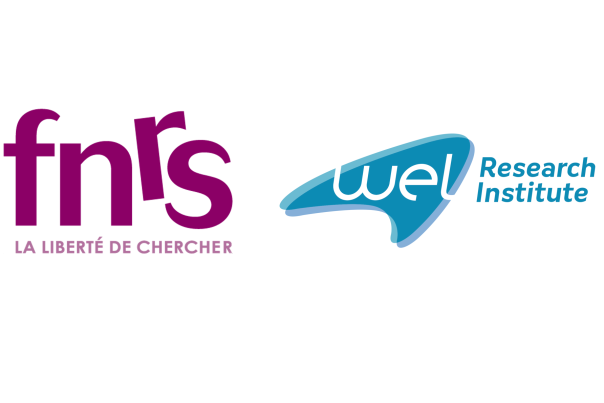Alison ForresterAlison Forrester is a Qualified Researcher at the FNRS. Her research group is based in the Unité de Recherche en Biologie Cellulaire (URBC), at the University of Namur, Belgium. Alison's work has been published in leading journals such as Nature, Nature Chemical Biology and the EMBO Journal.
Presentation
Alison obtained her PhD in Toxicology and Dermatology at Newcastle University (UK) under the supervision of Professors Nick Reynolds and Faith Williams, studying the mechanism underlying the formation of a dioxin-induced epidermal pathogenesis, chloracne.

She then took up a post-doctoral position at TIGEM (Telethon Institute of Genetics and Medicine, Italy) in Carmine Settembre's laboratory, where she worked on the quality control role of ER phagy during postnatal bone growth and anterograde trafficking. She completed a second post-doctoral project at Institut Curie (France) in Ludger Johannes' laboratory, where she worked on elucidating the mechanism of action of an inhibitor of retrograde transport, as well as extending her microscopy expertise by studying clathrin-independent endocytosis using lattice light sheet microscopy.
Research
Alison's research currently focuses on the modulation of protein secretion by mammalian cells and how this may relate to the treatment of diseases linked to aberrant secretion. Using her expertise in advanced microscopy, her team studies the effect of modulation of the early secretory pathway on cellular homeostasis and protein secretion. Alison's research is interdisciplinary, and she works with collaborators to identify new modulators of the secretory pathway and their mechanisms of action. Alison is expert in advanced bio-imaging techniques, including light sheet array microscopy and high-resolution confocal microscopy, using state-of-the-art technologies now available at the University of Namur's imaging platform ("MorphIM").
To carry out this work, she obtained a research position at the University of Namur (F.R.S-FNRS Chercheur Qualifié). An episode of Z Science is dedicated to her. View the episode of Z Sciences (25/05/2023).
She has also been awarded a scientific research incentive grant (MIS) from the FNRS.
Summary of the FNRS MIS grant project - Drugging the ERES
The exit of proteins from the endoplasmic reticulum (ER) is a crucially regulated step in the early secretory pathway. ER exit sites (ERES) are responsible for sorting cargo into COPII-coated transporters, for transport to the Golgi apparatus. This is a highly dynamic process, regulated by the orchestration of a number of proteins on the outer edge of the ER membrane. We recently discovered the first pharmacological inhibitor of ERES, Retro-2. Using Retro-2 as a tool to study acute ERES inhibition, and as proof of principle that ERES can be targeted, my project proposal addresses three questions:
- How does Retro-2's target, the ERES component protein Sec16A, mediate ERES function and cargo selection?
- What is the effect of acute modulation of ERES on organelle and cell homeostasis?
- How can ERES be developed as a therapeutic target?
By combining basic research into the regulation of ERES function and the application of this novel tool to cell/tissue homeostasis and disease, my group will combine interdisciplinary approaches (structural biology, mass spectrometry, interactomics, advanced bioimaging and medicinal chemistry) to provide a solid foundation on which we will develop ERES as a novel therapeutic target.
Alison Forrester is also a WEL Research Institute Investigator for the Welbio-Health program.

Mentor | Maya Schuldiner
Maya Schuldiner is a professor in the Department of Molecular Genetics at the Weizmann Institute of Science in Israel.
Professor Schuldiner is a leading scientist in the field of intracellular trafficking and organization. She is dedicated to developing new methods for understanding the role of proteins in organelle organization.
More information about Maya Schuldiner's laboratory...
Affiliation
NARILIS seeks to stimulate two-way interactions between basic researchers and physicians, and to build bridges between the laboratory and the patient's bedside. NARILIS therefore aims to facilitate the translation of basic research findings into clinical applications. Its mission is to promote multidisciplinary research in order to improve human and animal health and quality of life.
